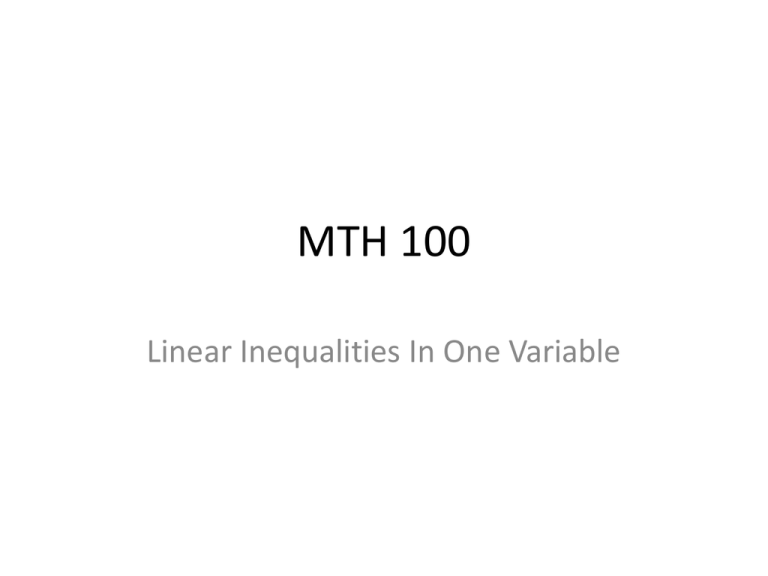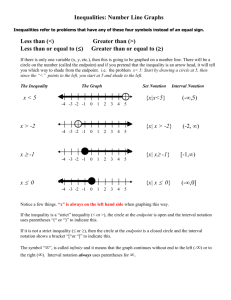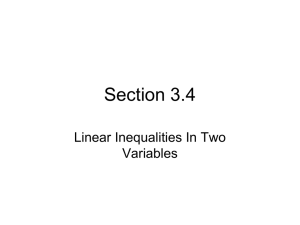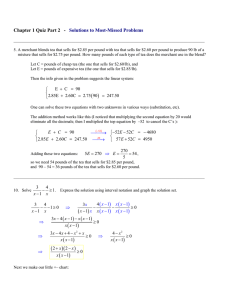MTH 100 Linear Inequalities In One Variable
advertisement

MTH 100 Linear Inequalities In One Variable Objectives 1. Determine if a Given Value is a Solution to a Linear Inequality. 2. Graph the Solution Set of an Inequality on a Number Line. 3. Use Interval Notation to Express the Solution Set of an Inequality. 4. Solve Linear Inequalities in One Variable. Overview • Linear inequalities are very similar to linear equations, with three distinct differences: 1. Instead of “=“, you have “<“, “>”, “<“, or “>”; 2. When you divide (or multiply) both sides by a negative, you must reverse your inequality sign; 3. After you solve your inequality (still isolating the variable), you graph your solution (Objective 2) and write your solution in interval notation (Objective 3). Objective 1 • Verifying a given a number is a solution to an inequality is exactly the same as an equation: substitute the given value. If the resulting statement is true, the number is a solution. Objective 2 • <: open circle (parenthesis), shade to the left • >: open circle (parenthesis), shade to the right • <: closed circle (square bracket), shade to the left • >: closed circle (square bracket), shade to the right Objective 3 • Interval notation is another way to express the solution set of an inequality. • Important things to remember: 1. “what’s on the left, what’s on the right”; 2. -∞ is way out to the left, ∞ is way out to the right (always use parentheses). Examples (Putting it all together) 4(b 2) 5b 6b 8 4 7w w 20 5 3 11 7 x 8 1 3









